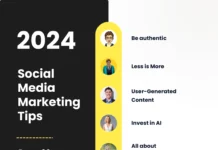
More and more consumers are shopping online. Your e-commerce website can take advantage of the popularity and convenience of the internet to reach a significantly larger audience than what you can get through traditional means. If you want to take your e-commerce business to the next level and increase traffic to your website, read on!
We will take you through strategies used by successful eComm websites. From blogs and social media to SEO and paid ads, below you will find a step-by-step used by digital marketing companies tasked with ‘online lead generation’ for eComm websites that came out of nowhere to now command a large portion of search engine and advertising traffic in their niche!
8 Proven Tactics to Increase Your E-Commerce Website Traffic
- Blog Posts
- Search Engine Optimisation (SEO)
- Influencers
- Customer Ratings
- Referrals
- Social Media
- Customer Services
- Paid Advertising
1. Blog Posts
Creating online content is an excellent way to boost traffic to your e-commerce website, as well as establish authority on subjects closely related to your business. When you create blog posts as content for your website, not only does your business establish a digital presence, but the blogs also help search engines establish the industry your website is in. As a result, your eComm website should gain plenty of organic search traffic.
Next, a blog with interesting and relevant content can potentially create opportunities for sales via internal links to products the post covers. The idea of the blog is to build trust and liking with customers and give them a go-to place to stay up to date with industry changes, updates, and the latest trends while also leading them to products and services on your eComm store, especially if the post is related to the topics that your target audience are already interested in.
When you start a blog, make sure you have a strategy in place. How many blog posts per week, how will you feature links for purchases directly to your digital store without looking too salesy, how will you use tags and categories, and which topics will your blogs specifically cover?
2. Search Engine Optimisation (SEO)
Search engines such as Google are how almost all of your customers will find your e-commerce website if they search for businesses in a similar area of interest as yours. Optimising your website for search engines is critical in ensuring that your website appears in search engine results. A crucial part of doing this is choosing the right keywords for your website. Whenever a potential customer enters search terms related to your business in Google, your website will appear in the top search results.
Optimising your e-commerce website for different keywords is one of the most important ranking factors, especially for Google. First, check which search terms your website is already ranking high on.
Not all keywords immediately lead to purchases. However, the priority is getting your brand in front of potential customers. Once your target audience knows about you, you’ll have more opportunities to nurture and convert visitors to customers.
Factors you will need to consider when optimising your website for SEO include:
- Adding a blog as per suggestion number 1
- On-page SEO configuration
- Backlinking via outreach/building relationships
- Adding schema to your website
- Ensuring your website’s page speeds are optimal
3. Influencers
Similar to traditional endorsements, influencer marketing can be helpful as you increase traffic to your e-commerce website. Influencers are people who can influence your potential buyers. Therefore, working with influencers can be a promising avenue for you to reach your target audience.
Choose those who are relevant to your business and to the potential customers that you aim to target. Bloggers, artists, and other famous personalities on social media platforms such as Facebook, Twitter, Instagram, YouTube, and TikTok can be the influencers you work with in your target market.
We cover more about social media in ‘section 6’ below!
4. Customer Ratings
Aside from the content you generate and the content you create with influencers, feedback from your current customers can help increase traffic to your website. This step is an easy way to get relevant and exciting content onto your website. Let customers leave ratings for products and services. These ratings can later appear on Google search results as more people share their experiences with your businesses.
Other customers’ reviews are among the most critical factors customers consider when deciding to purchase from an e-commerce website. You can take advantage of this by showcasing customer ratings on your website. Money-back guarantees and trust symbols can also help your website maintain a positive reputation. Encouraging satisfied customers to leave ratings can help increase customer confidence in your business and increase traffic to your website.
5. Referrals
Referrals can also increase your website traffic. Many customers consider word-of-mouth to be an excellent source of reliable information. Referrals from friends are arguably the most trusted source of advertising for customers. Think of it this way: if someone you trust is recommending something to you, it must be good, right? The same goes for your e-commerce business. Having friends refer your website to other friends can help boost engagement.
Referrals are also a way for you to engage existing customers into directing traffic to your e-commerce website. For example, you can encourage your current customers and blog readers to share their favourite products or services from your business with friends and family through social media platforms. You can also incentivise them to engage in referrals through giveaways, which can be a worthwhile investment as you increase traffic to your website.
6. Social Media
Now we would be surprised if your eComm site does not have some form of social media set up already. Hopefully, it does, but if you are just starting out and you plan on getting social media as well, then start immediately. Now the best way to approach social media is to use a scattergun approach. Of course, this is budget permitting. What we mean by scattergun approach is ‘sign up for every top-rated social media platform’ and wait to see which one brings the most leads!
Facebook, Twitter, Pinterest, YouTube, and Instagram are certainly some of the first that should be on your list. Now you have the chance to build relationships with your customers across multiple platforms that generate vast amounts of traffic. Plus, many of these sites have a paid ads service available, but before you go down this route, make sure you understand how the social media platform attracts customers, how to create buzz, how to use persuasive copy, how to use quality graphics and images, and exactly who your target market is!
- Facebook: You can utilise Facebook’s free analytics tools and sign up for paid ads!
- Pinterest: A powerful platform where people often go to find purchase ideas!
- Instagram: Great for showing off products, infographics, and building your brand!
- Twitter: One of the most challenging platforms but if you get your promotions right, your eComm site could gain not only tons of traffic but also a barrage of sales too!
- YouTube: The perfect way to show off products for sale on your website, build awareness, get people to engage with your brand, and create persuasive ads! If you are using all or most of these platforms, in my experience you will need a tool to help you organize and promote your social media content. I suggest you check out our reviews of the best social media tools for small businesses that we’ve tried over the years and pick out the one that is most suitable for your e-commerce needs.
7. Customer Services
Now you may wonder how customer service fits into the realms of online lead generation, and you would be right to question this! However, we are adding in customer services not entirely for lead generation but for repeat visits. One of the marketing industry’s focal points in retail lead gen both online and offline is repeat business! So, if you want your website to gain repeat business and repeat site visitors, then you need to make sure the customer services or self-help information is easily accessible for your customers. Check out Zendesk customer services solutions for more information.
- Live Chat: A live chat is perfect for one-on-one real time support. You will need to pay for and train customer support agents unless you do it yourself.
- Chat Bots: Chatbots are also a great way to offer people an interactive FAQ station. People can type in their question, and the chatbot returns answers immediately. It is a great way to build brand trust, and it’s interactive!
- Clear FAQ Pages: Self-help is important because potential, new, and existing customers will always have questions, and if your website has a clearly defined FAQ section where they can get answers, your brand will begin to instil trust!
8. Paid Advertising
The very last suggestion on our list is paid advertising. It is a competitive world in the paid ads space, and we only suggest using it once you have covered the above 7 suggestions. Some of the most utilised paid ads platforms are Google Ads, Yahoo & Bing, Facebook, YouTube, and Pinterest. With so many eComm stores and competition, using paid ads requires expertise or you could end up spending a lot with no ROI. Hence, it is advised to only go down this route when you have all your other lead gen sources fully set up!
Conclusion
Increasing traffic to your e-commerce website is one of the most important things that you can do for your business. As you attract new visitors and encourage old customers to return to your website, you establish your visibility and presence in the online market space. Keep the tactics mentioned above in mind, and your e-commerce website traffic will skyrocket.
See also: How do I improve my abandoned cart email?











